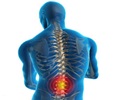General Info About Torticollis
Torticollis refers to a twisted neck in which the head is bent to one side, while the chin is turned to the other. It is also known as wryneck.
The word 'torticollis' comes from the Latin word ‘tortus’ meaning ‘twisted’ and collum meaning ‘neck’.
Torticollis affects people of all ages, mainly between 30-60 years of age. In torticollis there is flexion, extension or twisting of the neck muscles beyond their normal position.
The exact cause of torticollis is not known. Torticollis can develop slowly in a person with a family history of the disorder (spasmodic torticollis). Torticollis can also develop due to injury or in some cases as a side effect to certain medications.
Females are affected more than males. Stress and emotion can exacerbate the deformity.
Types of Torticollis
- Congenital torticollis (inherited)- This type of neck deformity is present at birth and is due to changes in the genes.
- Acquired torticollis (acute) - This type of neck deformity can occur overnight. It occurs due to damage to the nervous system, upper spine, or muscles. It usually lasts for few days and subsides with rest and non-steroidal anti-inflammatory drugs (NSAIDs).
The treatment of torticollis is targeted to relax the contracted neck muscles involved. Treatment might involve medications, physiotherapy, botulinum toxin injections or surgery. Timely treatment is extremely crucial, else the condition becomes permanent.








